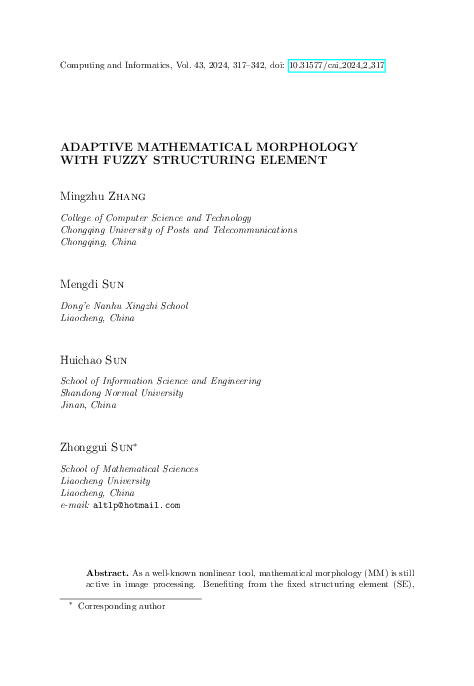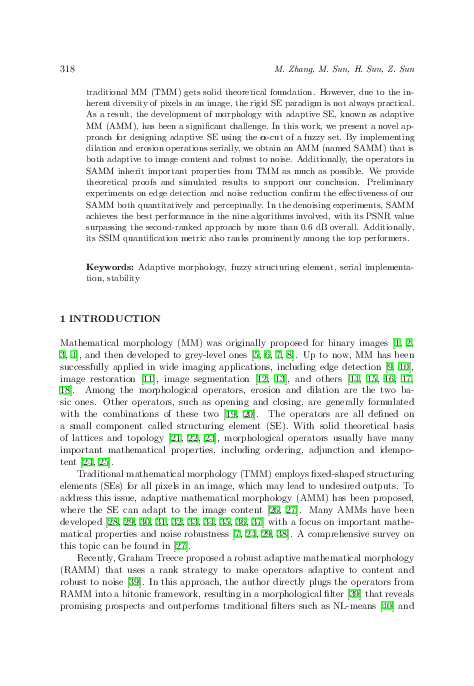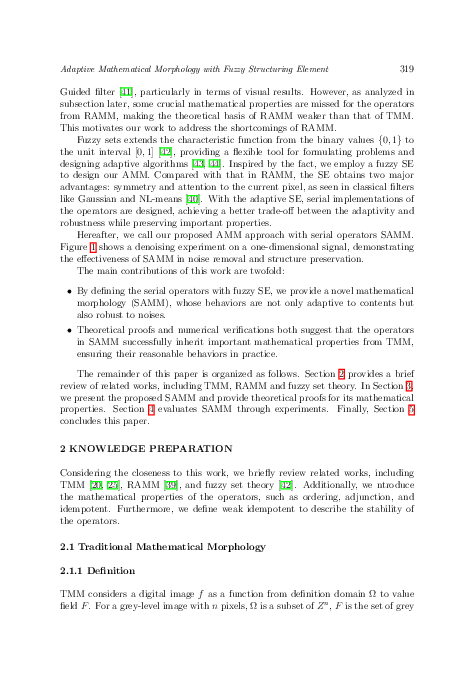Adaptive Mathematical Morphology with Fuzzy Structuring Element
keywords: Adaptive morphology, fuzzy structuring element, serial implementation, stability
As a well-known nonlinear tool, mathematical morphology (MM) is still active in image processing. Benefiting from the fixed structuring element (SE), traditional MM (TMM) gets solid theoretical foundation. However, due to the inherent diversity of pixels in an image, the rigid SE paradigm is not always practical. As a result, the development of morphology with adaptive SE, known as adaptive MM (AMM), has been a significant challenge. In this work, we present a novel approach for designing adaptive SE using the \boldsymbolα-cut of a fuzzy set. By implementing dilation and erosion operations serially, we obtain an AMM (named SAMM) that is both adaptive to image content and robust to noise. Additionally, the operators in SAMM inherit important properties from TMM as much as possible. We provide theoretical proofs and simulated results to support our conclusion. Preliminary experiments on edge detection and noise reduction confirm the effectiveness of our SAMM both quantitatively and perceptually. In the denoising experiments, SAMM achieves the best performance in the nine algorithms involved, with its PSNR value surpassing the second-ranked approach by more than 0.6 dB overall. Additionally, its SSIM quantification metric also ranks prominently among the top performers.
reference: Vol. 43, 2024, No. 2, pp. 317–342


